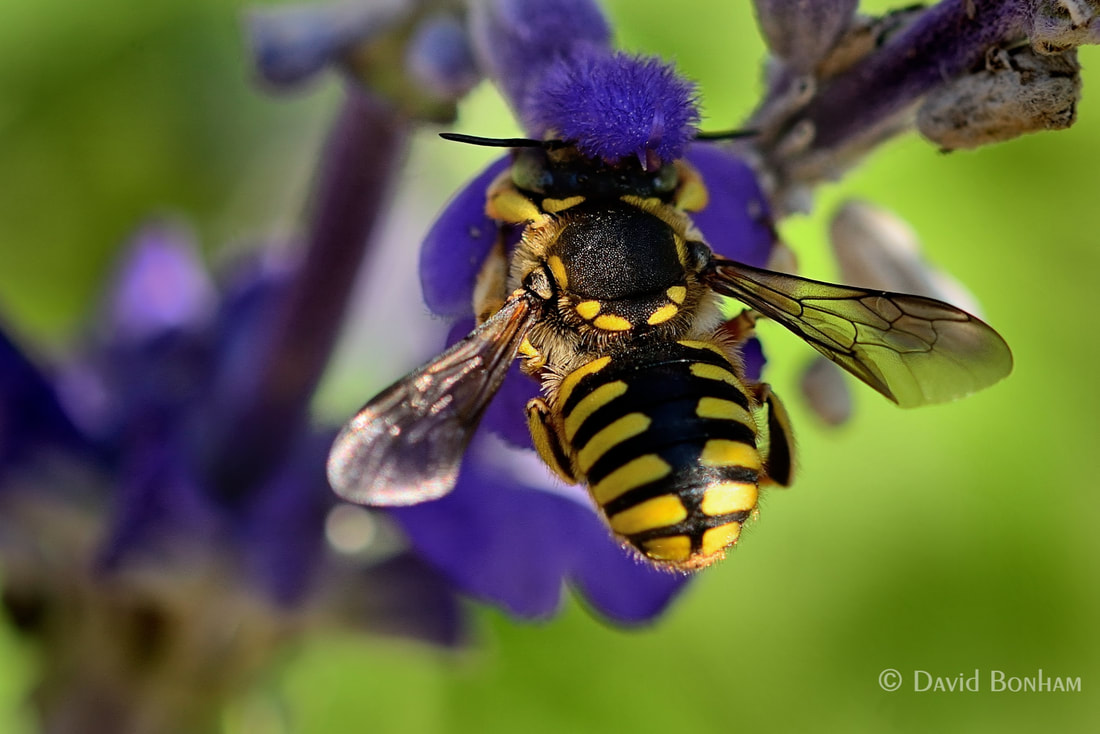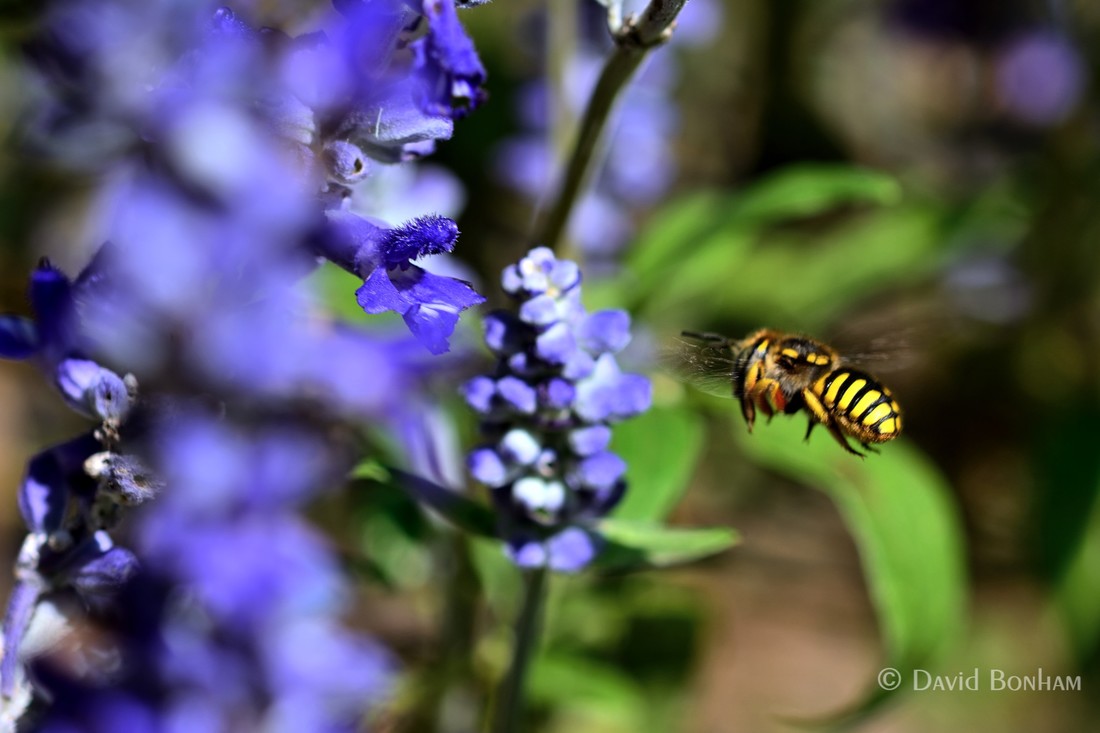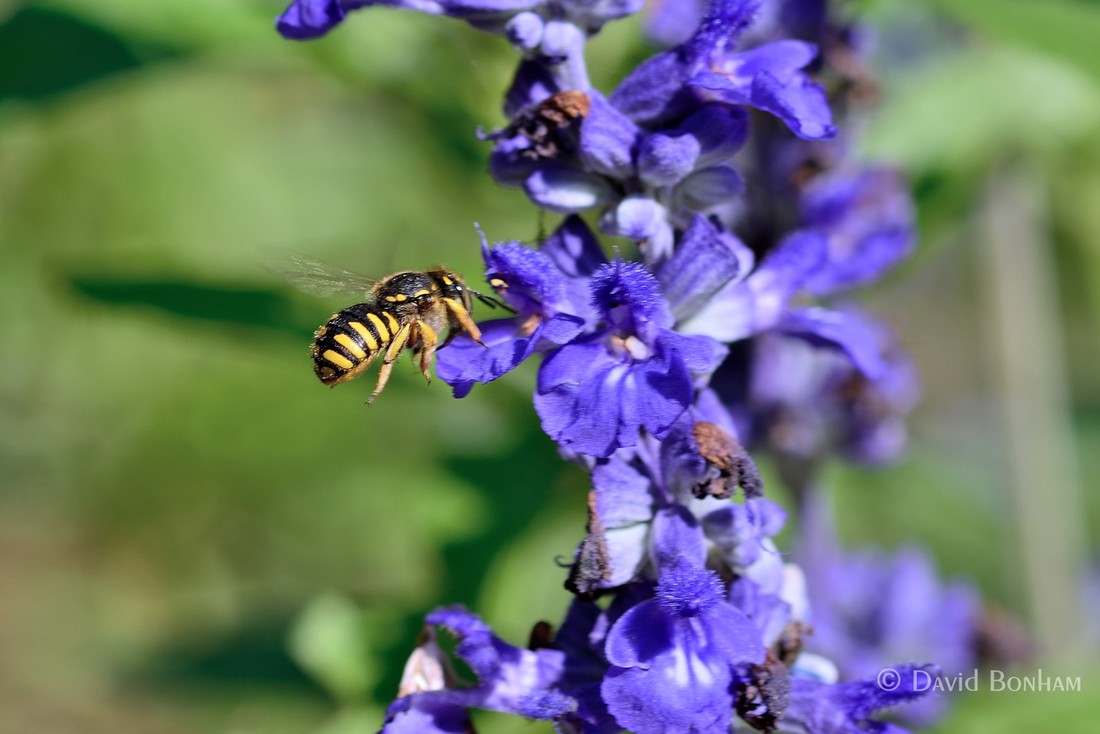Remember how last week I wasn’t sure what kind of swallowtail butterfly I was showing you? Well I’m on a roll keeping the theme going because this week I don’t know what kind of bee or wasp I am showing. (I have to admit though that Maverick Mist left a comment in that last post that identified the butterfly. If you want to know what it really was check out Maverick’s comment on the post.) At first I thought the critter below was a hornet, and maybe it is, but now I’m thinking yellowjacket, and maybe it isn’t. As far as stinging insects go it’s looks are kind of dramatic if not down right pretty.


I love it when they come flying in to the flower.



Have I ever mentioned how much I love it when they come flying in to the flower?

Aah, a bit of symmetry.

Thank you for stopping by.
David
Hi David,
Nice shots! This is a quick search I did, and I wouldn’t write it in stone, but your bee looks like it might be Anthidium manicatum, the European Woolcarder.
https://bugguide.net/node/view/7744
I thought it looked like a leafcutter bee, and wool-carder bees (which I’d never heard of before) are apparently in the same ballpark, taxonomically speaking. Just going by the bugguide images, it appears there is a decent amount of variation in the black and yellow coloration. I have to say your second specimen has one of the cleaner, more distinct patterns.
LikeLiked by 1 person
Thanks Mike. A bee; not a wasp and not a yellow jacket. I wasn’t even close! A European wool carder sounds kind of exotic. 🙂 I’m going to look into that more later today when I have a chance.
LikeLiked by 1 person
But you got the shots, so that’s really the important thing. 🙂
I think what tipped me off was the shape of the abdomen and overall body, just looked like a leafcutter bee (that happened to be wearing a yellow jacket costume!). Of course there are always exceptions, but other clues of bee over wasp, was the stubby or chubby appearance and hairiness. Wasps tend to be more streamlined and smooth. The eyes also looked more “bee-ish,” too, if I may. It’s all very scientific. 🙂
LikeLiked by 1 person
Thanks, I didn’t try bug guide.net because I’ve never had much luck in the past. I went with the closest fit in my Filed Guide to Insects and Spiders of North America which I now know is not that comprehensive.
LikeLike
Beautiful shots David. I don’t know a lot about bees but I stepped into a yellow jacket nest when I was a child and so I’m pretty sure it’s not that. When I looked it up something called a Wool Carder bee (silly name) looked pretty close to it.
LikeLiked by 1 person
Thanks Maverick. I looked up the silly name too and it sure looks like Mike was right with the identification. So were there any negative consequences with you misstep?
LikeLiked by 1 person
No negative consequences. Soaked in a tub of Bluing which must have helped.
LikeLiked by 1 person
I don’t know one bee from the other but you sure got some excellent shots of this one!
LikeLiked by 1 person
Thank you John!
LikeLike
With such a name, I couldn’t resist some research. A carder is a machine or manual device that straightens strands of wool readying it for spinning. The bee does a similar process by scrapping “hairs” off leaves for it’s nest. The bee is relatively new to North America.
https://en.m.wikipedia.org/wiki/Anthidium_manicatum
LikeLiked by 1 person
I looked it up too. I thought the name had a British ring to it and thought maybe it’s name originated in England but didn’t see that direct link immediately so was satisfied knowing the why behind the name.
LikeLiked by 1 person